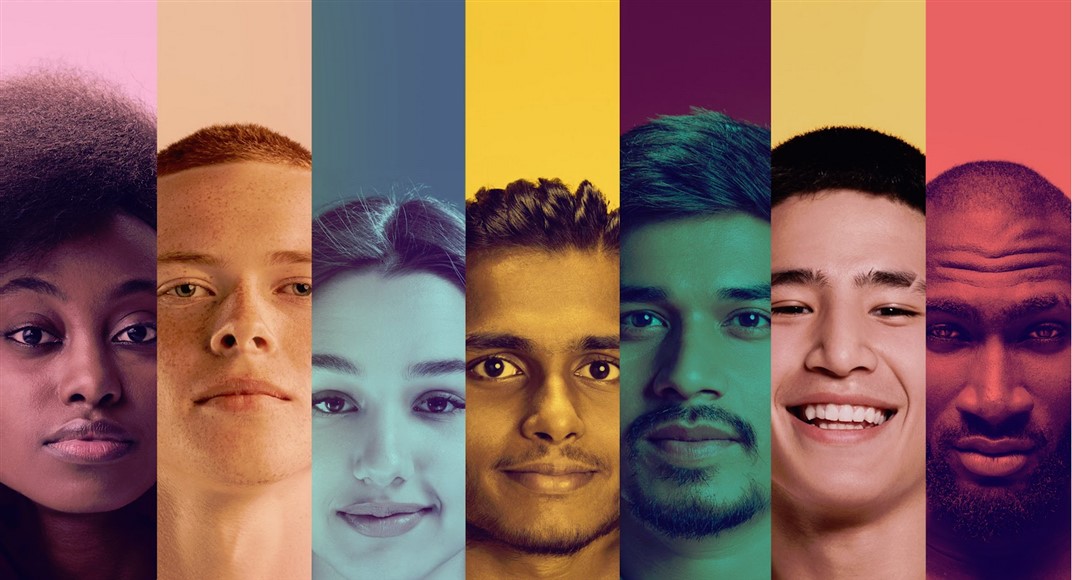In today's political climate, safety and security are privileges reserved for the wealthy, straight, white male elite. For everyone else—Black and brown communities, women, immigrants, the ill, LGBTQ+ individuals, and transgender people—survival itself is under threat. Harmful policies like the rollback of LGBTQ+ healthcare protections, launched by the White House and enforced by a government that has turned against its own citizens, put countless lives at risk.
The United States of America, once a leader of the free world, now stands isolated, its former allies looking on with dismay. Instead of progress, we face a relentless assault on marginalized communities—coming at us like a fire hose of hatred and oppression, manifested in the form of discriminatory laws, social stigma, and violence.
The ACLU is tracking an alarming 527 anti-LGBTQ bills in the U.S. While not all of these bills will become law, they all cause harm to LGBTQ people. Find out what your state is doing to discriminate against your friends and neighbors.
As I write this in the spring of 2025, the situation has never been bleaker for LGBTQ and transgender children and youth. Suicides among those groups are already far higher than the rates among most others. While we cannot change the behavior of government leaders, we can take action to build protective factors that will help those we love and care about to navigate a world that seems intent on destroying them.
Fight Anti-LGBTQ Legislation through Advocacy
The ACLU is tracking a shocking 563 anti-LGBTQ bills in the U.S. Find out what you can do by speaking with legislators in your state.
Learn about your rights
Criminal Justice Reform for LGBTQ People
LGBTQ Nondiscrimination Protections
Facts About Suicide Among LGBTQ+ Young People[i]
LGBTQ+ young people are not inherently prone to suicide risk because of their sexual orientation or gender identity but are at higher risk because of how they are mistreated and stigmatized in society.
The Data[ii]
- Suicide is the second leading cause of death among young people aged 10 to 14 and the third leading cause of death among 15-24 year-olds (Centers for Disease Control and Prevention, 2022). Lesbian, gay, bisexual, transgender, queer, and questioning (LGBTQ+) young people are at significantly increased risk.
- LGBTQ+ young people are more than four times as likely to attempt suicide than their peers.
- The Trevor Project estimates that more than 1.8 million LGBTQ+ young people (ages 13-24) seriously consider suicide each year in the U.S. — and at least one attempts suicide every 45 seconds.
- The Trevor Project's 2023 U.S. National Survey on the Mental Health of LGBTQ Young People found that 41% of LGBTQ+ young people seriously considered attempting suicide in the past year, including roughly half of transgender and nonbinary youth.
Note: This data is not current. If researchers collected more data today, the numbers would be much higher.
Suicide Risk Factors
- Conversion Therapy: Sometimes referred to as "reparative therapy," it includes several dangerous and discredited practices aimed at changing an individual's sexual orientation or gender identity.
- Minority Stress: LGBTQ+ people are a minority and are treated with discrimination, much like other minority groups.
How to Help At-Risk LGBTQ+ Young People
If you recognize some of the warning signs of suicide in someone you know or feel that someone is at risk for suicide, there are steps you can take to help.
- Online Safety
- Create Safer Spaces in Schools for LGBTQ+ Young People
- Friends & Family Support Systems for LGBTQ+ Youth
- Supporting Black LGBTQ+ Youth Mental Health
A Self-Care Guide for LGBTQ+ Youth[iii]

Adapted from The Trevor Project, the leading suicide prevention and crisis intervention nonprofit organization for LGBTQ+ young people.
Following the 2024 elections, The Trevor Project saw a nearly 700% increase in volume across classic crisis services. LGBTQ+ youth express a wide range of emotions — including anxiety, stress, fear, and sadness – about how the new political environment in the U.S. may impact their lives and the lives of people they love.
1. Take a moment for yourself
It's easy to get wrapped up in negative political commentary and feel overwhelmed.
Give yourself a moment to take a step back.
Unclench your jaw. Take a few deep breaths.
Check in with yourself about what you need: sleep, a meal, water, or time with your trusted community.
2. Reflect
It's normal to consider what the future may hold or to be uncertain about what certain policy positions might mean for you, friends, or family. It's also important to know that the full political landscape is evolving rapidly. Take care of yourself and reflect on whether you want to wait it out or consider taking proactive steps to protect your rights.
3. Find community
The LGBTQ+ community is vibrant and diverse and lives in every corner of the country.
If you can, search for a local LGBTQ+ center to see if they host community spaces and events.
Connect with your peers on TrevorSpace, The Trevor Project's safe space social networking site for LGBTQ+ young people.
Spend time with trusted friends and family members who support and understand you.
Practice allyship with our guide on how to signal you are an ally in a hostile environment.
4. Learn about LGBTQ+ organizations
In addition to community-based organizations, several national organizations support LGBTQ+ people, and it can be uplifting to see their work.
Consider checking out programs and resources from organizations working alongside The Trevor Project. The Equality Federation is a great place to start with a network of more than 30 state-based groups that young people can use to connect with their own state or community.
5. Set aside time to relax
Consider what helps you relax — like music, exercise, yoga, meditation, or cooking.
Set aside time to intentionally focus on your relaxation activity. Silence notifications and remove disturbances to enhance your focus.
The Trevor Project also offers a visual breathing exercise to help you relieve stress and anxiety.
6. Take a break from news and social media
It can be helpful to stay informed, but taking brief breaks from all screens can help you avoid becoming overwhelmed by news and social media.
Consider what's right for you: taking a small break, setting time limits for social media apps, disconnecting for a day, or anywhere in between.
To help you process your day, take a break from screens before bed.
7. Trans youth: look to the future
TrevorSpace is a safe place for transgender and nonbinary young people to find peer connections and build upon an already vibrant community.
Follow nonprofits supporting transgender and nonbinary rights and trans-led organizations; you'll see how hard they're working to protect trans people's rights, health, and more.
If you can, consider updating your identification documents, including your passport – even if you don't plan to travel outside the country. You can find out how here.
If you're concerned about your health care, know that you have options and people to help you navigate hurdles through The Trans Youth Emergency Project.
8. If or when you're up for it, take action
Check out our Resources page to learn more about LGBTQ+ identities and how to support LGBTQ+ young people. In addition to resources like our Guide to Being an Ally to Transgender & Nonbinary Young People and How to Support Bisexual Young People, the Trevor Project also offers culture competency training and suicide prevention training for supportive adults.
Sign up to advocate alongside The Trevor Project and help protect LGBTQ+ young people from harmful bills. Be sure to check out our guide on how to navigate personal safety while taking action.
Help support The Trevor Project's lifesaving crisis services and work to prevent suicide among LGBTQ+ youth by hosting a virtual fundraiser.
To help support LGBTQ+ young people through what can be an intense political climate and help them find support and build community, we're sharing several tips to consider and explore. As always, our crisis counselors are also available via text, calls, and chats 24/7, 365 days a year. The Trevor Project is 100% confidential and 100% free.
Testimonials and Support for LGBTQ Youth
It Gets Better: Find testimonials from around the world aimed at inspiring LGBTQ youth. Celebrities, public figures, and citizens contribute encouraging words, preach perseverance through difficult periods, and provide examples of how the future for LGBTQ youth is bright.
I'm From Driftwood: Watch inspiring first-person accounts of being LGBTQ in America.
Supporting LGBTQ Youth in Schools: A Critical Step Toward Suicide Prevention
Lesbian, gay, bisexual, transgender, queer, and questioning (LGBTQ) youth are at a significantly higher risk for suicide compared to their straight and cisgender peers. This disparity is not due to their identities but rather the discrimination, rejection, and marginalization they often face—particularly in school settings.
Schools play an influential role in the lives of LGBTQ youth. For many, they are spaces that can either affirm their identity or compound feelings of fear and isolation. Each new school year, LGBTQ students must navigate environments that may or may not be safe and supportive.
According to the most recent National Survey on LGBTQ Youth Mental Health:
- 59% of LGBTQ middle and high school students felt unsafe at school because of their sexual orientation,
- 42% because of their gender expression,
- 37% because of their gender identity.
However, the data also show hope: LGBTQ youth who attend schools with affirming and inclusive environments have nearly 40% lower odds of attempting suicide compared to those in unsupportive settings.
To foster safety and well-being, schools must:
- Integrate positive, accurate content about LGBTQ people and issues into classroom lessons and school libraries.
- Acknowledge and respect students' sexual and gender identities, reinforcing a sense of belonging.
- Provide comprehensive suicide prevention training for everyone in the school community—not just teachers and administrators, but also support staff, bus drivers, and cafeteria workers. Include students and parents in annual training plans.
Importantly, most youth, including LGBTQ youth, turn to friends when they are struggling. Equipping students with the tools to recognize signs of distress and respond with empathy can save lives. Suicide prevention training empowers young people to support each other and strengthens their resilience.
Every student deserves to feel safe, seen, and supported. Creating inclusive schools is not just good practice—it's lifesaving.
LGBTQ mental health and suicide prevention education[iv]
The American Foundation for Suicide Prevention (AFSP) has long been at the forefront of suicide prevention through education, research, and advocacy.
Talk Saves Lives: An Introduction to Suicide Prevention in the LGBTQ+ Community is an education program that gives participants essential and lifesaving understanding of topics including:
- Suicide risk and its unique considerations in LGBTQ+ communities
- Recognizing suicide risk factors and warning signs for LGBTQ+ people
- Protective factors that can help lower the suicide rate
- The latest research related to LGBTQ+ suicide prevention
- How to seek and offer support for yourself or others
- Crisis resources and services for the LGBTQ+ community
- What communities can do to support LGBTQ+ people
We all have a role to play in preventing suicide, and those in the LGBTQ+ community may face additional challenges and barriers to help because of discriminatory factors. This new program informs more people of the best ways to provide care and support to those who need it.
Find Talk Saves Lives events by visiting the AFSP Program Calendar.
Mental Health Resources in the LGBTQ+ Community

Transgender Community
Trans Lifeline:
This free and confidential lifeline is available by phone and offers direct emotional and financial support by and for members of the Trans+ community across the United States.
To access this lifeline, call 877-565-8860.
The Trans Lifeline also maintains a directory of hotlines and warmlines that provide a range of specialized services, including BIPOC-specific crisis lines, LGBTQ+ & religious crisis lines, substance abuse (crisis) support, mental health crisis support, and more. Additional information, gender-affirming resources, and more can be found on their website.
LGBTQ+ & BIPOC (Black, Indigenous, and People of Color) Communities
BlackLine:
This hotline is available 24/7 via call and mobile app and provides peer support, crisis support, and an avenue to report vigilante and police misconduct. BlackLine is operated by and primarily for members of the BIPOC and LGBTQ+ communities.
To access this resource, call or text 1-800-604-5841. Users can also download the BlackLine app on their mobile devices. For more information and FAQs, please visit their website.
DeQH Helpline:
The Desi LGBTQ+ Helpline for South Asians is a free and confidential resource that provides peer support to individuals identifying as LGBTQ+ and South Asian. The helpline can be reached between 8-10 pm Eastern on Thursdays and Sundays.
To access this resource, call 908-367-3374. Callers can also leave a message and request a call back if attempting to reach the hotline outside operating hours. Additional information and resources, including local support groups, can be found on their website.
INARA Warmline:
This free and confidential warmline is operated by members of the Muslim Alliance for Sexual and Gender Diversity to support, empower, and connect LGBTQ+ Muslims. The warmline is available from 5-11 pm Central on Fridays and Saturdays.
To access this resource, call 71-QTM-INARA (717-864-6272). Visit the MASGD's website to access their online programming, additional resources, and more information about the organization.
LGBT National Hotline:
This free and confidential resource is available by phone from 4 pm-12 am Eastern Monday-Friday and 12-5 pm Eastern on Saturdays. Trained volunteers are available to support members of the LGBTQ+ community and provide a safe and affirming space to talk during operational hours.
To access this resource, call 888-843-4564. More information, programs, and hotlines can be found on their website.
What You Can Do to Help
Suicide is preventable, and supportive adults play critical roles in the lives of young people at risk for suicide. Learn the risk factors and warning signs of suicide, along with the specific protective factors that keep young LGBTQ people safe.
Resources for Parents and Caregivers
It is important to tell your child you are concerned and want to help, regardless of their sexual orientation or gender identity. Some organizations that offer information and guidance around suicide prevention and supporting LGBTQ youth include:
- Youth suicide warning signs
- The Trevor Project: Crisis intervention and suicide prevention support for LGBTQ youth and their loved ones
- TransYouth Family Allies: Guidance and support for transgender youth, their families and communities
- The Jed Foundation: Suicide prevention strategies in college and university environments
- Not sure what to do? Call 988 for immediate, free, and confidential support.
NOTE: These two programs are specific to New York City. Similar support programs may be available in your community.
- PFLAG NYC: Peer-to-peer support for parents, families and friends of LGBTQ people.
- The Center: Local, comprehensive community center for NYC LGBTQ youth and their families. Visit in person or online.
Resources for Schools
- Look for training available in your area, like Youth Mental Health First Aid and Kognito At-Risk.
- The Jed Foundation: Prevent suicide on college and university campuses
- GLSEN: Create a safe and inclusive environment for LGBTQ youth and their allies
- Download the #BeThe1To Message Toolkit for 5 steps to help someone in crisis
- How Do Mental Health Conditions Affect the LGBTQ Community? (NAMI)
If you are thinking about suicide, reach out to someone you trust, your doctor, or call 988 for free, confidential, and immediate support.
Other crisis intervention resources for LGBTQ youth and their caregivers include:
- The Trevor Project's 24/7/365 suicide prevention and crisis intervention hotline for LGBTQ youth and their loved ones: 1-866-488-7386
- Support via text (Crisis Text Line): Text "START" to 741-741
- National Suicide Prevention Lifeline: 1-800-273-TALK (8255)
- https://www.thetrevorproject.org/resources/article/facts-about-lgbtq-youth-suicide/
- https://www.thetrevorproject.org/resources/article/facts-about-lgbtq-youth-suicide/
- https://www.thetrevorproject.org/resources/guide/finding-support-building-community-amid-political-uncertainty/
- https://afsp.org/lgbtq-mental-health-and-suicide-prevention/
 A
Culture of Caring: A Suicide Prevention Guide for Schools (K-12) was
created as a resource for educators who want to know how to get started and
what steps to take to create a suicide prevention plan that will work for their
schools and districts. It is written from my perspective as a school principal
and survivor of suicide loss, not an expert in psychology or counseling. I hope
that any teacher, school counselor, psychologist, principal, or district
administrator can pick up this book, flip to a chapter, and easily find helpful
answers to the questions they are likely to have about what schools can do to
prevent suicide.
A
Culture of Caring: A Suicide Prevention Guide for Schools (K-12) was
created as a resource for educators who want to know how to get started and
what steps to take to create a suicide prevention plan that will work for their
schools and districts. It is written from my perspective as a school principal
and survivor of suicide loss, not an expert in psychology or counseling. I hope
that any teacher, school counselor, psychologist, principal, or district
administrator can pick up this book, flip to a chapter, and easily find helpful
answers to the questions they are likely to have about what schools can do to
prevent suicide.


